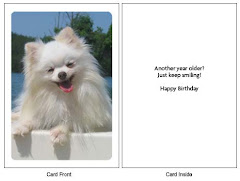Delaplane, VA
 Not to worry. Munchkin is as tart as ever, but our wine is getting mellower as it ages.
Not to worry. Munchkin is as tart as ever, but our wine is getting mellower as it ages.
Today's a big day... Munchkin and Pomeroy are going to transfer our wine from the primary fermentation unit (aka bucket) to the "barrel" (aka carboy), where it will undergo malolactic fermentation, oaking, and aging.
 Not to worry. Munchkin is as tart as ever, but our wine is getting mellower as it ages.
Not to worry. Munchkin is as tart as ever, but our wine is getting mellower as it ages.Today's a big day... Munchkin and Pomeroy are going to transfer our wine from the primary fermentation unit (aka bucket) to the "barrel" (aka carboy), where it will undergo malolactic fermentation, oaking, and aging.
Step one, as always, involves cleaning our equipment and the carboy. While we're washing up, John explains we'll be using VP41, a freeze-dried bacteria known as enocoucus oeni that produces malolactic fermentation.  Putting bacteria in wine seems a little like putting botulism in your face, but John assures us it will do good things... enhance "mouthfeel" and introduce good tanins.
Putting bacteria in wine seems a little like putting botulism in your face, but John assures us it will do good things... enhance "mouthfeel" and introduce good tanins.
 Putting bacteria in wine seems a little like putting botulism in your face, but John assures us it will do good things... enhance "mouthfeel" and introduce good tanins.
Putting bacteria in wine seems a little like putting botulism in your face, but John assures us it will do good things... enhance "mouthfeel" and introduce good tanins.A little 2.5 gram envelope produces enough bacteria for about 66 gallons of wine - plenty for our 10 6-gallon batches. John mixes some with hot water and passes it around for the smell test. Ummm. Smells milky, and everyone knows Munchkin loves cream. John says we want to make sure we don't throw diacetyl acid (which produces a buttery taste; good for Chardonney, but we've got Cabernet). Pomeroy says if you're going to throw butter, he'll be happy to catch it.
 Time to check out the wine. Appropriately, we appoint Uncle Jeff our Hydrometer or is that "High-drama"-ter expert. The wine measures in at 1.005, meaning almost all the yeasties are done.
Time to check out the wine. Appropriately, we appoint Uncle Jeff our Hydrometer or is that "High-drama"-ter expert. The wine measures in at 1.005, meaning almost all the yeasties are done. Of course, we have to taste again. Classmate Dave asks "How much of a gulp do I need?" John replies, "Just enough." Ours is still a little fizzy, but starting to taste like real wine. We may have taken too much... but the team doesn't let it go to waste.
Of course, we have to taste again. Classmate Dave asks "How much of a gulp do I need?" John replies, "Just enough." Ours is still a little fizzy, but starting to taste like real wine. We may have taken too much... but the team doesn't let it go to waste. Now we take our siphon and transfer to the carboy. It looks like a blood bank with all that red fluid flowing.
Now we take our siphon and transfer to the carboy. It looks like a blood bank with all that red fluid flowing.  John says to position for max air flow. The more oxygen the better at this point (for reds; deadly for whites), because it helps malolactic and yeast do their thing.
John says to position for max air flow. The more oxygen the better at this point (for reds; deadly for whites), because it helps malolactic and yeast do their thing.Meantime, it's time to oak the wine. No Munchkin-size oak barrels; instead, we put oak into the wine.
 The Wine Dogs opt for a 50/50 combination of the French oak that came with our kits and the Hungarian oak that John has provided. The former looks like shavings; the latter are actual chips.
The Wine Dogs opt for a 50/50 combination of the French oak that came with our kits and the Hungarian oak that John has provided. The former looks like shavings; the latter are actual chips. Well, the carboy's nearly full and we have some left over. Only one solution... pour it into our glasses and drink up!






































No comments:
Post a Comment